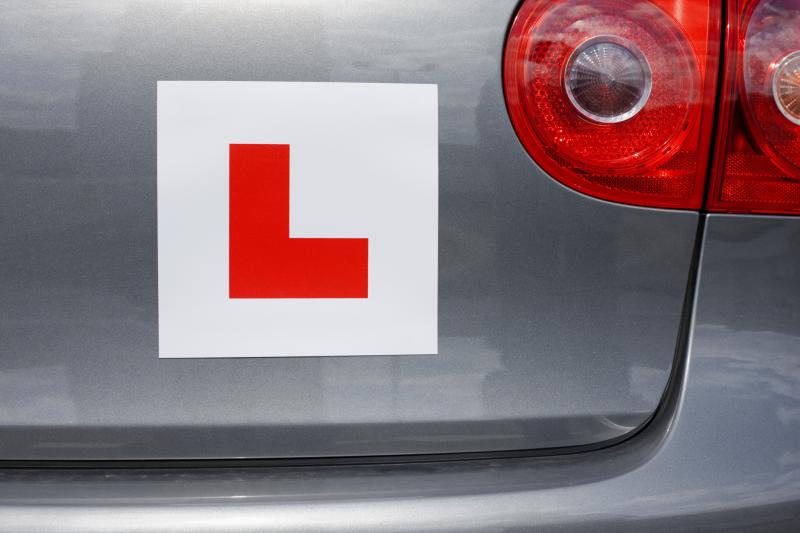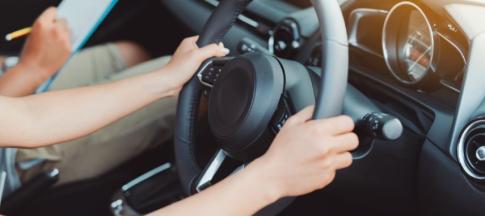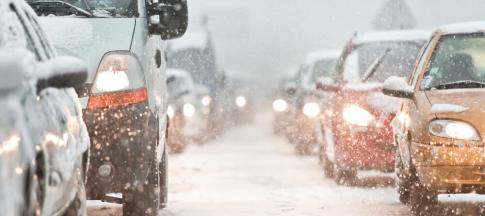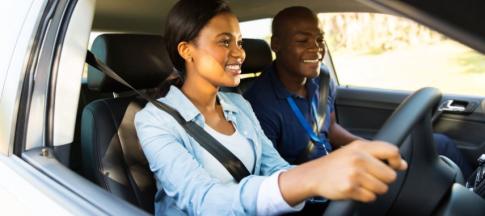
All learner drivers in the UK must display learner plates every time they are driving a car. They alert other road users that there's a novice driver controlling the car.
While we know you'll be excited to get behind the wheel and get your hands on a full driving licence, take a look over our guide to L plates to make sure you'll be learning on the right side of the law.
What are L plates?
In the UK, learner plates are displayed on the front and back of a vehicle to show others that a learner driver controls the vehicle.
What are D plates?
In Wales, red D plates, red L plates, or both, can be used while a learner is driving a vehicle. This is due to the bilingual legislation in force within the country.
Are L plates a legal requirement?
Yes. Learners driving a vehicle must display L plate stickers at all times. You can get up to six penalty points on your licence if you don’t display a learner plate or if it isn’t the right size.
What are the other learner driver legal requirements?
A provisional licence allows you to drive on all UK roads except motorways, but you must be accompanied by a driving instructor, family member or friend who is:
- over 21 years old
- qualified to drive the type of vehicle you’re learning in
- held a full driving licence for at least three years.
These restrictions are lifted as soon as you pass your driving test, even if you haven’t received your full licence yet.
Displaying your L plates
There are a few things you need to know when it comes to how to display L plates on your car.
When should L plates be displayed?
Any vehicle driven by a learner must display red L plate stickers at all times.
When should L plates be removed?
Learner plates should be removed or covered when a learner doesn’t drive the vehicle unless it’s a driving school car.
How many L plates should be displayed?
There must be two L plates displayed on the vehicle.
Where do L plates have to be displayed?
Learner plates must be visible to others from the front of the vehicle and from behind the vehicle.
Where to place L plates on a car
L plates must be placed on the front and rear of a car. Avoid fixing them to the windscreen or back window, as they can restrict your view. Example of where to put L plates on a car:


Are there any L plate legal specifications?
Yes. They must conform to legal specifications.
L plate dimensions
By law, it must be a red letter on a white background with the following size:

Where can I buy L plates?
You can search online to buy L plates or check your local stores such as Halfords.
What types of L plates can I buy?
Magnetic L plates and sticky L plates (adhesive L plates) are the most common options.
L plates falling off
You must ensure that you use the correct ones for the vehicle surface. They must be secured on the vehicle so they do not fall off.
Download printable L plate template

It is legal to print your own L plates as long as they are the correct size.
Download your printable L plate.
L plate insurance – do learner drivers need insurance?
Yes, and you have a few options here:
- If you have your own car then you’ll need your own insurance for that vehicle, but this could be an expensive option for new drivers
- If you're learning in a friend or family member’s car you can get Learner Driver Insurance which covers you in their car and their No Claims Bonus won’t be affected if you need to make a claim for any bumps or scratches
- Finally, you can be added onto your parent's policy as an additional driver but their No Claims Bonus won’t be protected if you need to make a claim.
You do not need your own insurance when learning on a driving school car as the instructor is responsible for the car and student insurance.
L plates after passing the test
After passing the test, as a fully qualified driver, you can no longer display the L plates. Instead, you may opt to use the P plates.
What are P plates?
In the UK, you can display green (probationary) P plates to show that you’ve just passed your driving test.
Why use P plates?
P plates show that you have less experience than other drivers.
Are green P plates required by law?
Unlike learner plates, P plates are not legally required. They are used voluntarily.
How long can green P plates be displayed for?
You can leave them on your vehicle for as long as you like, until you feel confident enough to remove them.
Where to place P plates on a car
Similar to L plates, the green P plates can be placed on the front and back of a car. The P plate position must not obstruct the driver’s visibility. Example of where to put P plates on a car:


Download printable P plate template

You can download your printable P plate here.
You can learn more about L plates and P plates laws, rules and regulations on gov.uk, Legislation.gov.uk and The Highway Code.
Plus, check out our guide on learning to drive.


